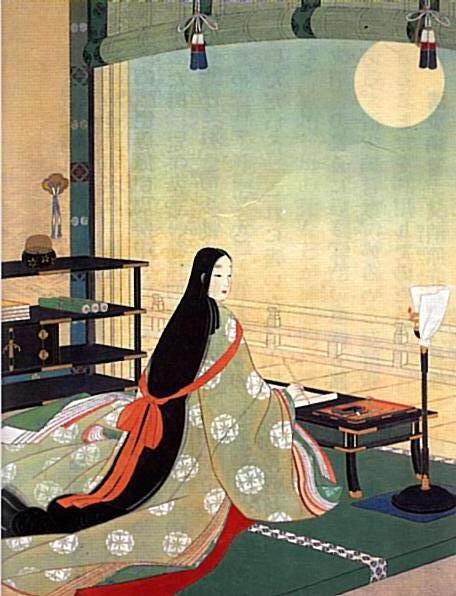
"In this fleeting world where no dewdrop can linger in the autumn wind, why imagine us to be unlike the bending grasses" (p. xi) of medieval Japan, but of the impermanence of all life. The author, Murasaki Shikibu, was a lady of the Heian Court of Japan, and her poetic story paints a memorable portrait not only of the "vanished world" (p.

The thousand-year-old TALE OF GENJI unfolds slowly over the course of more than a thousand pages, requiring patience on the part of a modern reader. In either case, Siedensticker's poems are indispensible. Otherwise, it may be a good idea to compare passages and see which you prefer.

Perhaps the best course of action is to read both (if you have the time). I admire Royal Tyler's achievement, but I enjoy Siedensticker's. But more footnotes wouldn't have been a hindrance.

His translation is, then, more immediately readable. While his complete translation is true, he doesn't take Tyler's cares to translate Shikibu's stylistic quirks. He really excels with the book's frequent poetry his translations are the best in English. Edward Siedensticker offers good accuracy, with prose that's elegant and precise. At the same time, it can be hard to follow at times, since many of Shikibu's authorial conventions have been preserved. It also takes great pains to render the novel in stylistic terms that are very close to the original. The more recent one, by Royall Tyler, boasts helpful footnotes and background notes. Two recent translations compete for top honors.

It has also been liberally edited and sometimes loosely translated one wonders how much of the original work remains. The first translation, by Arthur Waley, reads beautifully and still holds a place in many fans' hearts. The novel is nearly a millenium old, and a translation usually has to go through two hands (the Japanese translator and the English) before we have the pleasure of reading. “It is very significant that this discovery of the manuscript edited by Teika will be available for researchers,” she said.The Tale of Genji boasts rights as the first novel ever written, but the road getting here has been rough. Kyoto University professor Junko Yamamoto told the paper that previous research on the chapter has relied on manuscripts of The Tale of Genji that were completed about 250 years later. The foundation said although the newly-found manuscript “mostly” matches the common version of the story, there are some grammatical differences.Īccording to the Asahi Shimbun, family records show the manuscript has been in the hands of the Okochi family since 1743, when it was handed down from the Kuroda family of the Fukuoka feudal domain. The manuscript had been kept in an oblong chest in a storeroom at the Tokyo home of Motofuyu Okochi, a descendant of the former feudal lord of the Mikawa-Yoshida Domain in Aichi Prefecture, the Japan Times reported.Įxperts at Reizeike Shiguretei Bunko, a foundation for the preservation of cultural heritage, have now confirmed its authenticity, with the handwriting of the text, and the cover of the manuscript, identical to other Teika manuscripts. Until now, just four chapters of the 54-chapter story are confirmed to be Teika’s transcriptions, but now a fifth chapter, which depicts Genji’s encounter with the girl who becomes his wife, Murasaki, has also been identified as Teika’s.


 0 kommentar(er)
0 kommentar(er)
